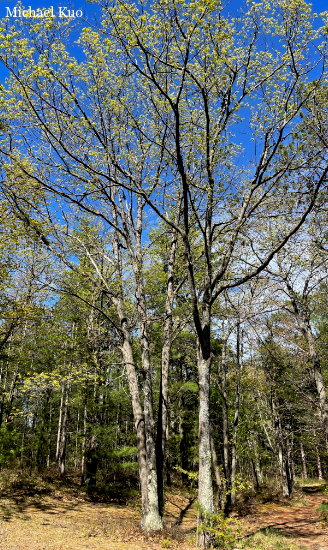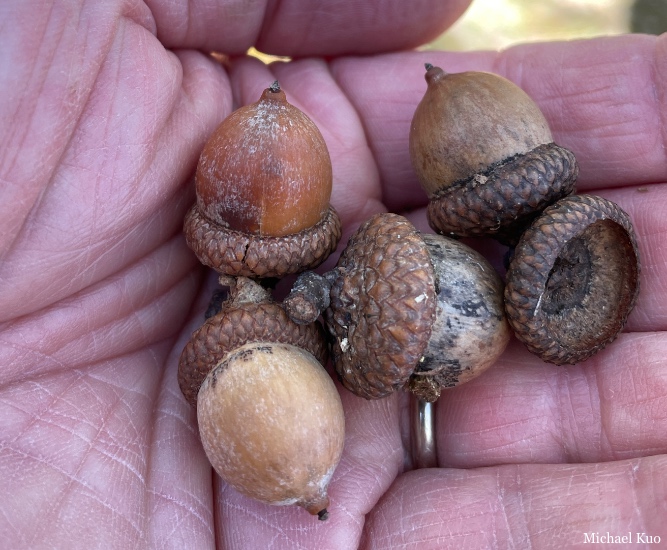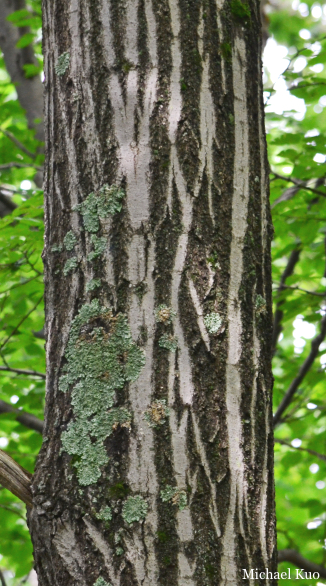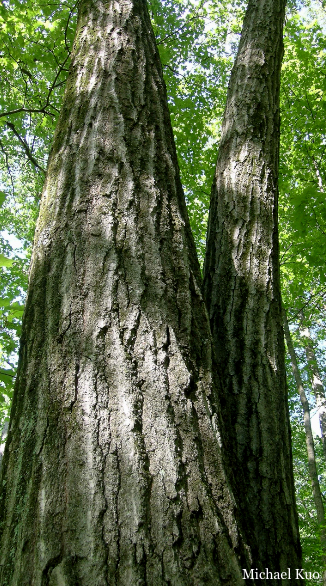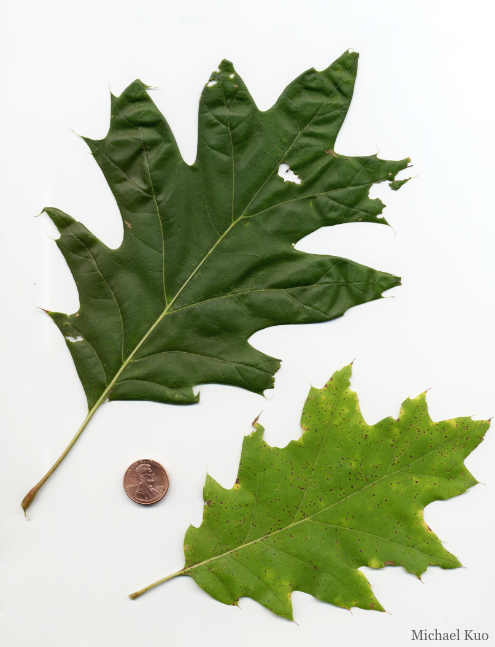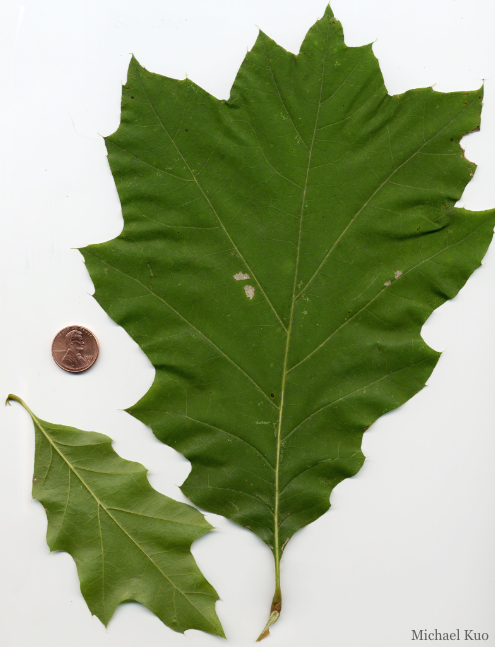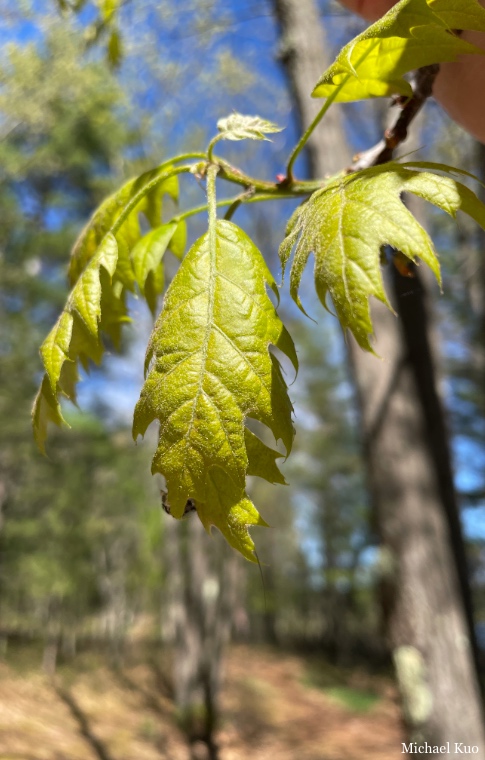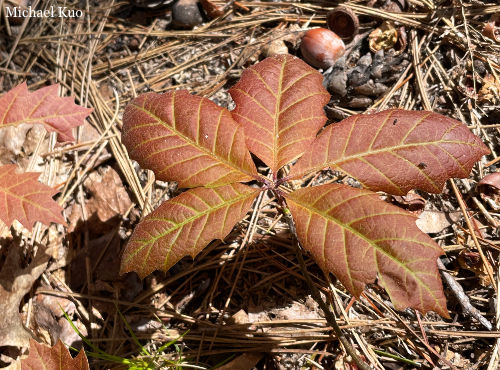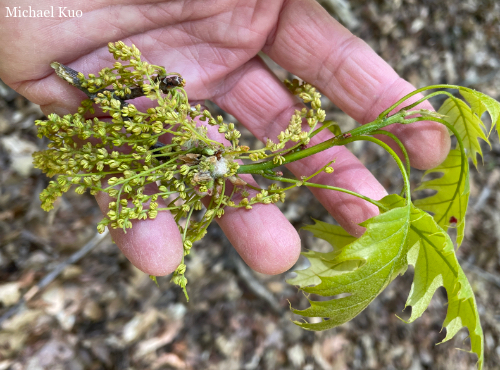 Quercus rubra (northern red oak) |
|
This is the most common "red oak" in the Midwest—although, broadly speaking, "red oaks" in general make up a large group of species within Quercus, the genus for oaks. In this broad sense, red oaks have leaves with bristle tips (tiny little points at the tips of the lobes) and acorns that fall every two years, while "white oaks" (in the broad sense) lack bristle tips and have acorns that fall every year. Northern red oak (Quercus rubra) is fairly variable within its range, especially when it comes to its bark, and is probably best identified by its leaves, acorns, and buds. Look for northern red oak in the oak-hickory forests of the lower Midwest, and in the mixed northern hardwood forests of the upper Midwest. It grows best in upland locations: on back dunes, on ridges, and so forth. |
 midwestern range |
|
|
|
|
|
|
|
|
|
|
|
|
|
|
|
|
|
|
References: Harlow 1946, Peattie 1948, GN Jones 1971, Miller & Jaques 1978, Kricher & Morrison 1988, Preston 1989, RL Jones 2005, Mohlenbrock 2006, Kershaw 2007, Sibley 2009, Voss & Reznicek 2012, Dey 2014, Mohlenbrock 2014, Hilty 2022, USDA 2022. Kuo, Michael & Melissa Kuo (June, 2022). Quercus rubra (northern red oak). Retrieved from the midwestnaturalist.com website: www.midwestnaturalist.com/quercus_rubra.html All text and images © , midwestnaturalist.com. |
